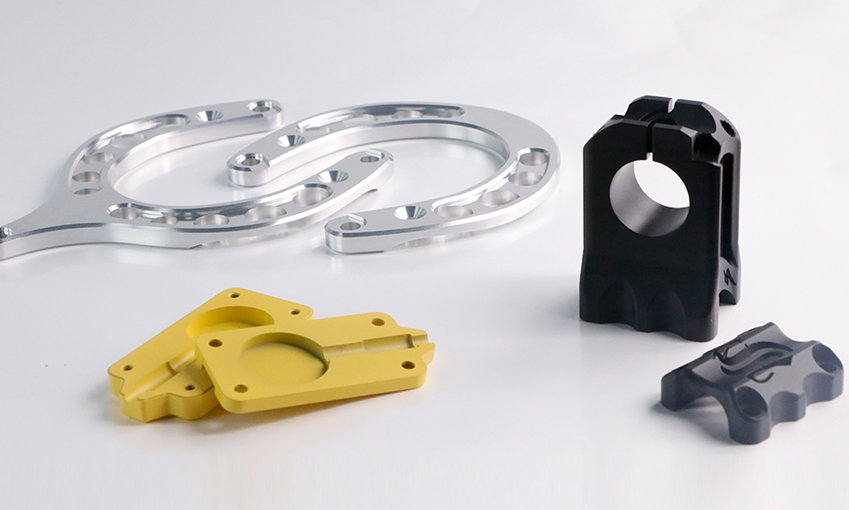CNC machining of curved surface parts typically follows the machining rules of CNC machining centers, which include rough machining, semi-finishing, finishing, and detail processing. However, when dealing with free-form curves and surfaces that cannot be clearly expressed by geometric or mechanical drawings, the primary challenge arises during the roughing stage of the machining process.
Machining centers rely on precise instructions and toolpaths to accurately shape the workpiece. While geometric and mechanical drawings can effectively convey the dimensions and shapes of standard features, they may not adequately represent complex curved surfaces. This requires additional considerations and techniques in the roughing stage to ensure the efficient removal of excess material while maintaining the desired shape.

To address this challenge, various techniques are employed in CNC machining centers for roughing curved surface parts. By employing these techniques and considering the unique challenges of roughing free-form curves and surfaces, CNC machining centers can effectively machine curved surface parts to the desired specifications.
1. Adaptive Toolpaths: Advanced CAM software can generate adaptive toolpaths that dynamically adjust the tool’s engagement with the workpiece based on the actual surface geometry. This helps maintain consistent cutting forces and reduces the risk of tool chatter or excessive material removal.
2. 3D Machining Strategies: CNC machining centers with 3D capabilities enable the use of specialized toolpaths, such as scallop machining or contour-parallel toolpaths, to efficiently remove material while following the shape of the curved surface.
3. Rest Machining: By using rest machining techniques, the roughing stage can remove most of the excess material while leaving a small stock allowance on the surface. Subsequent semi-finishing and finishing operations can remove the remaining material, achieving the desired surface quality.
4. Simulation and Verification: Before machining the physical part, virtual simulation and verification tools can be employed to visualize the toolpaths and predict potential issues, such as collisions or excessive forces, ensuring a smooth and efficient roughing process.
What is the Main Tool for CNC Machining Curved Surface Parts & Why
The main tool used for CNC machining curved surface parts is typically a ball end mill or a bull nose end mill. These end mills have rounded cutting edges that allow for smooth and precise machining of curved surfaces.
There are a few reasons why these tools are commonly used:
-Contour Following: The rounded cutting edge of a ball end mill or bull nose end mill enables it to follow the contours of curved surfaces with greater accuracy compared to flat or square-end tools. This helps in achieving the desired surface finish and dimensional accuracy.
-Reduced Scallop Height: The use of a ball end mill or bull nose end mill helps minimize the appearance of tool marks on the machined surface, resulting in a smoother finish. The rounded shape of the cutting edge reduces the height of scallops or steps left behind by the machining process.
-Versatility: Ball end mills and bull nose end mills are versatile tools that can be used for a range of machining operations. While they are commonly associated with machining curved surfaces, they can also be used for semi-finishing, finishing, and contouring operations on various materials.
-Efficient Material Removal: The geometry of these end mills allows for efficient material removal during roughing operations. Their rounded cutting edges facilitate a more gradual engagement with the workpiece, reducing the risk of tool overload and enabling higher machining speeds.
Skills of CNC Machining Curved Surface Parts
We can offer you a brief overview of the skills required for CNC machining curved surface parts. When it comes to CNC machining curved surface parts, several skills are essential for achieving high-quality results:
-CAD/CAM Skills: Proficiency in computer-aided design (CAD) and computer-aided manufacturing (CAM) software is crucial for creating accurate 3D models and generating toolpaths necessary for machining curved surfaces.
-Knowledge of CNC Machining Principles: Understanding the fundamentals of CNC machining, such as tool selection, cutting speeds and feeds, and machine capabilities, is vital for correctly programming and executing machining operations.
-Geometry and Trigonometry: A strong grasp of geometry and trigonometry helps in visualizing and calculating the toolpaths needed to create complex curved surfaces accurately.
-Programming Skills: Mastery of CNC programming languages, like G-code, enables the creation of precise machining instructions for the CNC machine to follow.
-Understanding Machine Dynamics: Familiarity with the specific capabilities and limitations of the CNC machine being used is crucial for optimizing toolpaths and selecting machining strategies for curved surface parts.
-Tooling Selection and Optimization: Knowledge of different types of cutting tools, tool holders, and fixturing methods is important for selecting the most suitable tools and optimizing the machining process for curved surfaces.
-Surface Finishing Techniques: Having a repertoire of surface finishing techniques, such as sanding, polishing, and buffing, allows for the refinement of curved surface parts to achieve the desired aesthetic and functional qualities.
This is just a general outline of the skills relevant to machining curved surface parts. To gain more detailed information, we recommend exploring reputable manufacturing and engineering resources, academic publications, or consulting with industry professionals such as CNCJY in the field of CNC machining.